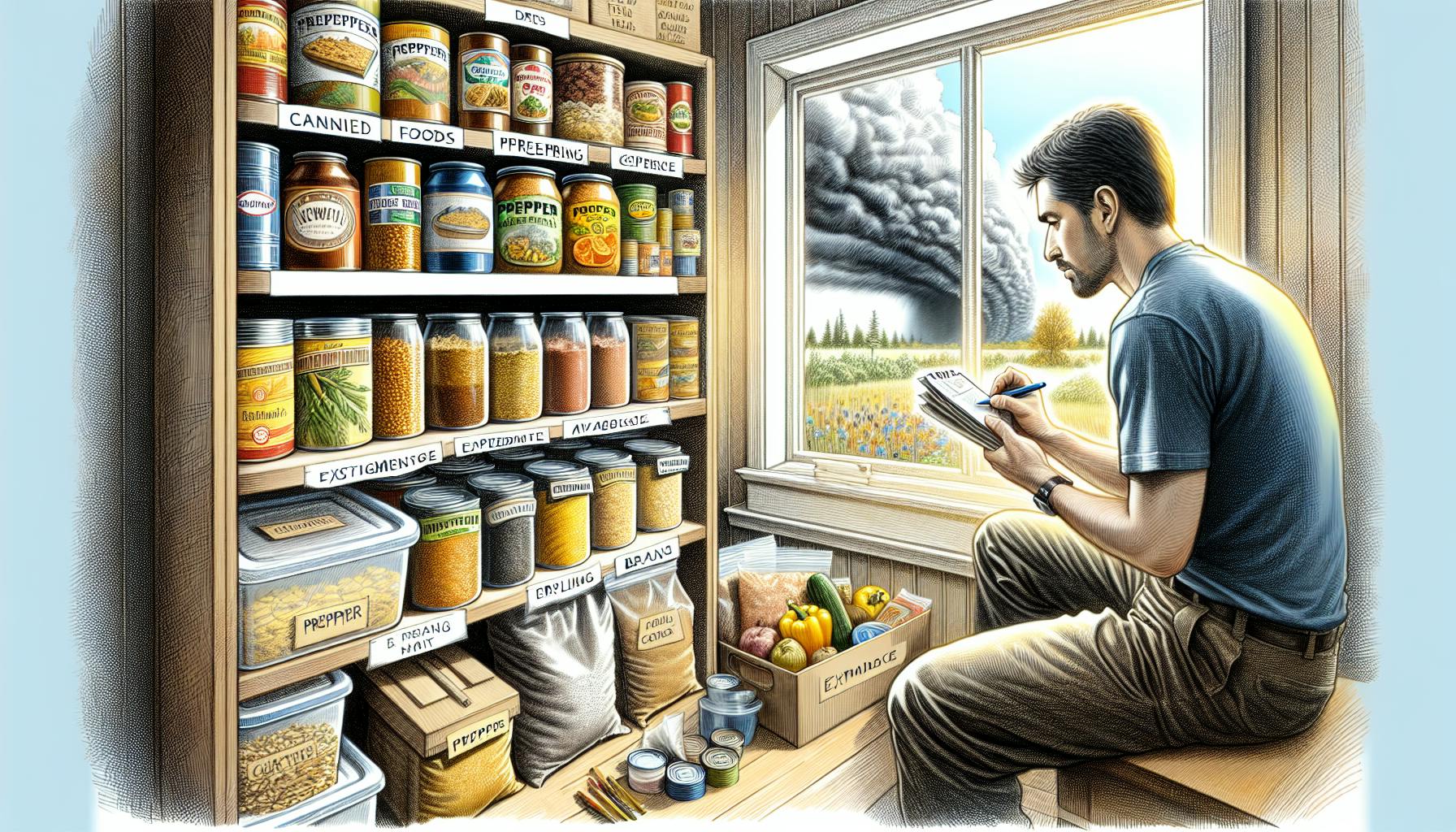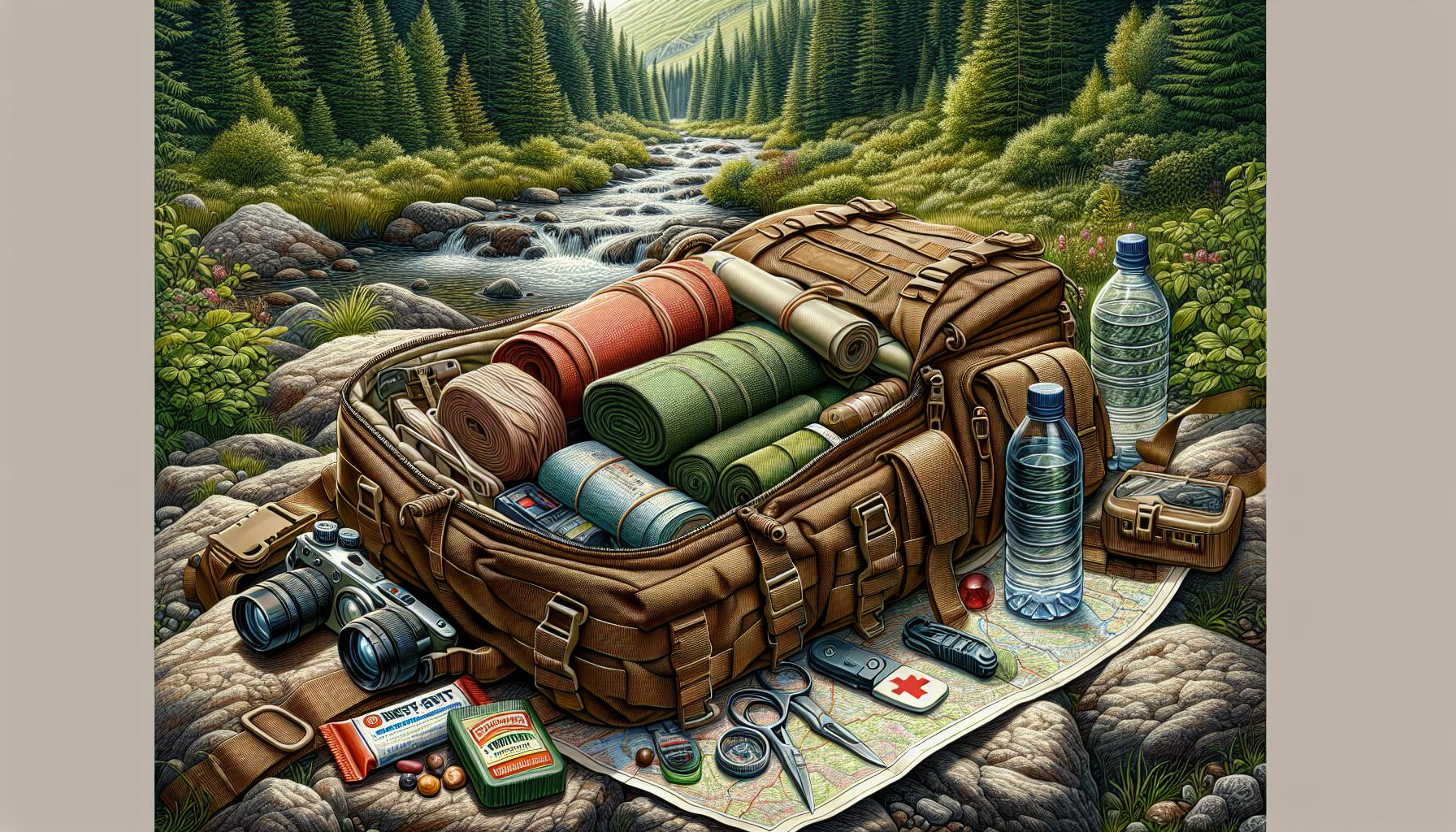When it comes to emergency preparedness, most families would agree that having a well-stocked bug out bag is an essential part of being ready for any situation.
With some strategic planning and packing, you can create bug out bags tailored to your family's unique needs, keeping every member safe and comfortable during an emergency evacuation.
In this article, you'll discover the best practices for assembling bug out bags for family preparedness in 2023, including considerations for children, seniors, pets, and any specialized medical requirements.
Introduction to Family Emergency Readiness
Being prepared for emergencies is critical for all families. Assembling bug out bags customized to your family's specific needs is a key strategy for readiness. Bug out bags allow you to evacuate quickly and ensure every family member has the necessary supplies in an emergency scenario.
Understanding the Importance of a Family-Specific Bug Out Bag
When creating the best bug out bag for family, you must consider the needs of children, elderly members, those with medical conditions, and even pets. The items packed should provide safety, sustenance and comfort for the unique members of your household for at least 72 hours. For example, packing age-appropriate snacks and activities for kids, medications and mobility aids for elderly members, and food/supplies for pets.
The best bug out bag list would include all essentials like first aid kits, flashlights, batteries, masks, emergency shelter, tools, etc. But tailoring items like clothing, footwear and food/water rations based on each family member is key. Using a modular or layered packing system allows customization within one bag.
The best bug out bag 2023 takes a family-centric approach. Assembling bug out bags specific to your family's demographics and needs ensures maximum preparedness this year and beyond.
What is the best bug out bag on the market?
When choosing the best bug out bag for your family, the Uncharted Supply Co. Seventy2 Pro Survival System is a top choice. This versatile bag offers 72 hours of supplies for 2 people and comes equipped with food, water, first aid, tools, and more.
For a budget-friendly option, the Emergency Zone Stealth Tactical Bug-Out Bag provides ample storage and survival gear at an affordable price point. The roomy pack can hold 3+ days of food and water plus extras like flashlights, gloves, and emergency blankets.
If traveling light is key, the super portable Judy The Mover Max functions as both a bug out and transition bag. At just 5 pounds, it stows 3 days of bare necessities in an easy-to-carry form factor. The streamlined design makes this a great grab-and-go option.
When prepping your family bug out bag, be sure to consider factors like weight, portability, storage space, and individual needs. Customize your bag with items like medications, pet supplies, or kid-friendly foods. Prioritize survival basics like shelter, water, first aid essentials, and nutrition. With thoughtful planning and quality gear, you can keep your loved ones prepared.
What is the best size for a bug out bag?
When preparing your bug out bag, the size you choose depends largely on your family's unique needs. However, most preppers recommend a bag in the 40-55 liter range, which equates to around 2,450-3,350 cubic inches.
Here's a quick overview of ideal bug out bag sizes:
- 40-45 liters - Best for singles or couples traveling light with limited supplies. Easy to carry longer distances.
- 50 liters - A versatile mid-size bag good for small families focused on essentials.
- 55+ liters - Choose this larger size if you need to pack gear for kids, babies, pets or elderly family members. The tradeoff is increased weight.
No matter what size you select, focus first on packing the survival basics - water, food, first aid, tools, etc. The best bug out bag expertly balances utility, portability and preparedness. Don't overstuff your bag to the point it becomes too heavy to transport if needed.
Prioritize function over form by picking a rugged, water-resistant backpack made of durable fabrics. FEATURES like waist straps and padded shoulder straps also enhance comfort and ease of carrying. Choosing the right size bug out bag takes planning, but it will give your family confidence in facing disasters both big and small.
What is the difference between a bug out bag and a 72-hour kit?
A bug out bag is a portable kit that contains critical items to help you survive for 72 hours when evacuating from a disaster. It is designed for situations when you need to leave quickly and take shelter elsewhere.
A 72-hour kit, on the other hand, contains supplies to sustain a household during a short-term emergency event or disruption of services. It is geared more towards sheltering in place.
Key differences:
-
Portability: A bug out bag is designed to be lightweight and portable in case you need to evacuate on foot. A 72-hour kit is usually larger and meant to sustain a family within the home rather than on the go.
-
Customization: Bug out bags can be customized to meet specialized needs like children, pets, medications, etc. 72-hour kits cover basic survival items.
-
Evacuation strategy: Bug out bags align with a "get out of dodge" approach if a location becomes too hazardous. 72-hour kits buy time while continuing to shelter in the home.
So in summary, bug out bags facilitate evacuation mobility while 72-hour kits promote in-home sustainability during short-term disruptions. Ultimately, most emergency preparedness experts recommend having both on hand!
sbb-itb-b932644
What is the difference between a bug out bag and a go bag?
Both go bags and bug out bags are designed for emergency situations when you need to quickly grab a supply bag. However, there is a key difference in terms of duration:
-
A go bag is meant to last around 72 hours. It contains essentials to get you through a short-term emergency evacuation or power outage. Go bags are focused more on convenience rather than long-term survival.
-
A bug out bag is designed to last much longer - 1 week or more. It contains gear and supplies needed for extended evacuation from a disaster. Bug out bags prioritize survival essentials over convenience.
The main factors that differentiate go bags and bug out bags are:
Intended Duration
- Go Bag: 72 hours
- Bug Out Bag: 1 week+
Focus
- Go Bag: Convenience
- Bug Out Bag: Survival
Key Differences
- Go Bags have fewer clothes, food, water
- Bug Out Bags pack survival tools like fire, shelter, hunting
So in summary, go bags are for short-term evacuations while bug out bags prepare you for long-term survival away from home. When making either type of bag, tailor the contents to your family's unique needs.
Building the Best Bug Out Bag for Family Preparedness
Assembling an emergency bug out bag tailored for your whole family's needs is an essential part of disaster preparedness. When an evacuation order is issued, having bug out bags packed and ready to go for each member of your household will enable a quick, stress-free exit. Here are some helpful tips for creating custom bug out bags to meet everyone's needs.
Assessing Your Family's Unique Needs
The first step is taking inventory of who needs a bug out bag in your family. Make a list with each person's name, age, health considerations, and mobility level. This will help you understand what supplies they will each require. For example, infants need diapers, wipes, formula/food and medications while elderly family members may need mobility aids and daily prescription drugs packed. Try to anticipate any items your family relies on daily so they can be included.
Choosing the Best Bug Out Bag for Your Family's Needs
With your list in hand, you can select an appropriate bug out bag type and size for each family member. Backpacks often work best for healthy adults while duffel bags provide flexibility in packing odd-shaped items. For young children or elderly, compact bags with multiple straps or pull handles enable others to carry them. Consider color coding bags or attaching reflective patches to make family members easy to keep track of. Choose durable, water-resistant fabrics.
Strategic Packing of Food and Water Essentials
You'll want to pack at least a 3 day supply of shelf-stable calories, nutrients and fluids for sustenance until you reach safety. Lightweight, high protein foods like granola bars, dried fruits and nuts are smart choices. Beef jerky or tuna packs also provide protein. For rehydration, pack powdered Gatorade, electrolyte tabs and bottled water - aim for 1 gallon per person for 3 days. Don't forget utensils, a can opener and mess kit.
Customizing Family First Aid Kits
Assemble a well-stocked first aid kit for your family's evacuation bags. Having bandages, antibiotic ointment, pain/fever relievers, digestive medications, masks, sanitizer and latex gloves can help manage injuries or illnesses while on the move. If anyone requires daily prescriptions, include a 3 day supply. List each medication/dose to avoid confusion. A basic first aid reference guide can empower you to treat minor issues effectively.
Ensuring Comfort with Proper Shelter and Bedding
To endure time spent outdoors, choose durable popup tents or waterproof tarps to provide portable shelter from the elements for your family. Use reflective emergency blankets or lightweight, compact sleeping bags rated for the climate you live in. Inflatable camping pads add cushioning and insulate from the cold ground. Having multiple blankets and pads allows family members to double up for added warmth and comfort if needed.
Packing the Essentials: The Best Bug Out Bag List
When preparing a bug out bag for your family, having the right essentials can mean the difference between survival and disaster. Selecting versatile, compact tools along with critical hygiene and clothing items tailored to each family member's needs builds preparedness.
Selecting Multi-Functional Survival Tools
Equipping your family bug out bag with durable, multi-use survival tools avoids weighing down your pack with single-purpose gadgets. Assembling a modular preparedness kit with space-saving yet practical functions ensures you have crisis capabilities at the ready. The best bug out bag includes versatile picks like:
- Pocket knives - Folding blades with combo straight/serrated edges cut through fibrous foods or cordage in a pinch.
- Multitools - All-in-one options with pliers, screwdrivers, bottle openers and wire cutters pack problem-solving potential.
- Fire starters - Weatherproof stormproof matches, magnesium flint rods and tinder keep critical warmth and light accessible.
- Flashlights - LED flashlights with focused spot or wide flood beams illuminate hazards when vision is compromised.
- Emergency radios - Crank or solar-powered AM/FM radios with phone chargers stay linked to news and networks.
Tailoring tools to abilities and ages prevents dangerous misuse - specialize kits for children while emphasizing redundancy for adults.
Prioritizing Sanitation and Personal Hygiene
Maintaining health and sanitation standards for your family requires packing the basics for wash-up and waste. Prepare for infections or allergic reactions by organizing critical hygiene and medical products:
- Soap - Anti-bacterial body wash or cleansing wipes prevent disease spread.
- Toothbrushes & toothpaste - Reduce bacteria buildup leading to infection.
- Menstrual supplies - Stock sanitary pads, tampons and pain relievers per individual cycle needs.
- Towels - Pack compact, ultra lightweight camping towels for drying off and warmth.
- Medications - Tailor first aid kits and prescriptions for existing family conditions.
Planning for safe waste and refuse disposal maintains sanitation - pack a trowel, toilet paper and sealable bags.
Dressing for Survival: Layered Clothing Choices
Selecting the appropriate layers extends survival time when facing exposure to weather extremes. Assembling the best bug out bag for family means tailoring breathable base layers, insulating mid-layers, and weatherproof jackets for individual needs:
- Base layers - Skin-tight and moisture wicking fabrics like wool or synthetics vent sweat.
- Mid-layers - Fleeces, down or fibrefill insulators trap body heat in adverse conditions.
- Outer layers - Waterproof and windbreaker outer shells buffer environmental factors.
Adjust children's wear for rapid growth - include adjustable garments, extra small and plus sizes.
Footwear for Mobility: Best Choices for Bug Out Scenarios
Choosing durable, protective footwear equips your family to cover uneven ground during an evacuation. Compare versatile best bug out bag picks capable of adapting to changing terrain:
- Hiking boots - Waterproof leather boots with ankle support and rugged tread hike rugged topography.
- Walking shoes - Lightweight athletic shoes handle roads and trails during sustained use.
- All-weather sandals - Quick drying open-toed options shed excess moisture to prevent blisters.
Make sure to size footwear for growth spurts - consider including extra pairs of thick wool socks for layering warmth and comfort.
Efficient Organization of Bug Out Bag Contents
Preparing for emergencies means strategizing bag storage and security. Maintain quick access to gear during high-stress evacuation by:
- Compartmentalizing - Utilize interior dividers, pockets and pouches to group like items.
- Labeling - Attach nametags to central items for family member grab bags.
- Prioritizing - Ensure first aid, tools, radio and flashlight are easily accessed.
Distribute weight across family members appropriately - compact children's bags to leave room for growth.
Selecting the survival fundamentals for all family members builds preparedness flexibility - customize the best bug out bags with age and ability appropriate tools, medical resources and versatile clothing.
Documentation and Communication: The Lifelines in an Emergency
Having proper documentation and reliable communication tools can be the difference between life and death in an emergency situation. When bugging out with family, being able to access important records, navigate unfamiliar areas, and coordinate with loved ones is essential. This section covers key documentation and communication gear to include in bug out bags.
Securing Critical Family Documents
Essential documentation should be stored in durable, waterproof plastic bags within your bug out bag. Be sure to include:
- Identification: Driver's licenses, passports, birth certificates, social security cards, etc. for all family members
- Insurance Information: Medical, home/renters, auto, life insurance cards and policy numbers
- Medical Records: Prescriptions, immunization records, doctors' contacts, medical conditions
- Emergency Contacts List: Printed list of names, phone numbers, addresses of close friends and family
- Maps of Home Area and Potential Destinations: Mark rally points, caches, evacuation routes
- Cash in Small Denominations: Enough to cover 1-2 weeks of essential purchases if banks and ATMs are unavailable
Having these critical personal records easily accessible can facilitate access to healthcare, travel, available support services, and financial resources during disasters.
Navigational Aids and Maps: Finding Your Way During a Crisis
When normal travel is disrupted during catastrophes, navigating to rally points and around road detours can be extremely difficult without proper references. Every bug out bag should contain:
- Paper Maps and Atlas: Laminated state maps and road atlases will still work when electronics fail
- Compass: Ensure proper orientation when roads and terrain are unrecognizable
- GPS Device: Allow navigation via satellite guidance even without cell signal
- Local Landmark Guidebook: Identifies obscure but permanent navigation points like mountain peaks and river confluences
Practice orienteering using these navigation tools on camping trips or short hikes. Understanding how to effectively use a compass and read topographic maps takes time but boosts self-reliance if crisis strikes.
Choosing Reliable Emergency Communication Tools
Coordinating with loved ones during disasters requires durable communication gear functional without infrastructure reliance. Prioritize these options:
- Emergency Crank Radio: Receives public AM/FM/NOAA broadcasts when the grid is down
- Satellite Communicator: Two-way text communicator with GPS tracking via independent satellite network
- Signal Mirror: Reflects sunlight to visually signal aircraft from afar
- Whistle/Noisemaker: Loudly signal distress call over moderate distances
- Family Radio Frequency Plan: Printed directions of radio channels to communicate locally
Most smartphones will be rendered useless without functioning cell towers and power grids. Thus best bug out bags select tech-free and/or satellite-based communication solutions.
Crafting a Comprehensive Bug Out Plan
Successfully evacuating entire families demands unity of purpose and coordination. Essential elements of a bug out plan include:
- Primary and secondary rally point locations to reconvene if separated
- Communication protocols like radio frequencies, responsibility for checking-in
- At least two evacuation routes per rally point, avoiding predictable population centers
- Sustainability contingencies if lingering in rally point longer than expected
- Special considerations for children, elderly, those with medical conditions
Hold frank discussions to assign roles, manage expectations, and impart survival skills suited to each person's ability.
Practicing Your Bug Out Drills
Simply possessing well-stocked bug out bags provides little assurance families can smoothly evacuate danger zones. Establish a practice routine by:
- Conducting surprise drills every 3-6 months as if a real emergency unfolding
- Rotating who takes leadership roles during simulations
- Time how long to access gear, secure pets, depart residence
- Identify lessons learned after each drill like kit gaps or unanticipated needs
Solidifying evacuation logistics and building muscle memory cultivates essential reactiveness if that day ever arrives your family must truly bug out.
Conclusion: Optimizing Your Family's Bug Out Strategy for 2023
When assembling bug out bags for your family in 2023, focus on tailoring the contents to each family member's needs. Make sure to pack essential supplies like water, non-perishable food, first aid kits, flashlights, and other survival gear.
Key Takeaways
- Pack at least 3 days' worth of supplies for shelter, water, food, first aid, and other basics
- Include any necessary medications, infant formula, pet food
- Choose multifunctional items when possible to save weight and space
- Involve kids in picking out comfort items for their own bags
- Label bags clearly and conduct practice drills for readiness
Having well-stocked and organized bug out bags ready for every member of the family is crucial for emergency preparedness. Reevaluate your bags each year and replace expired items as needed. With smart planning that covers all your essentials, you can have confidence that your family is primed for any situation 2023 may bring. Stay safe out there!


